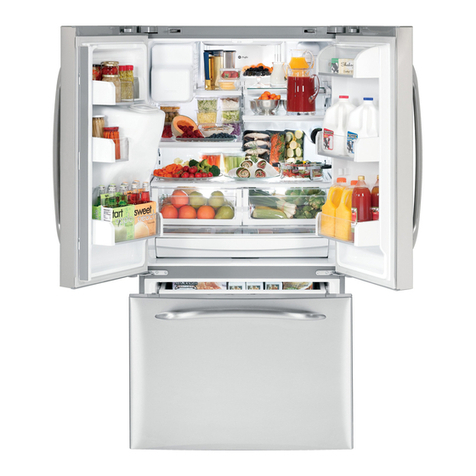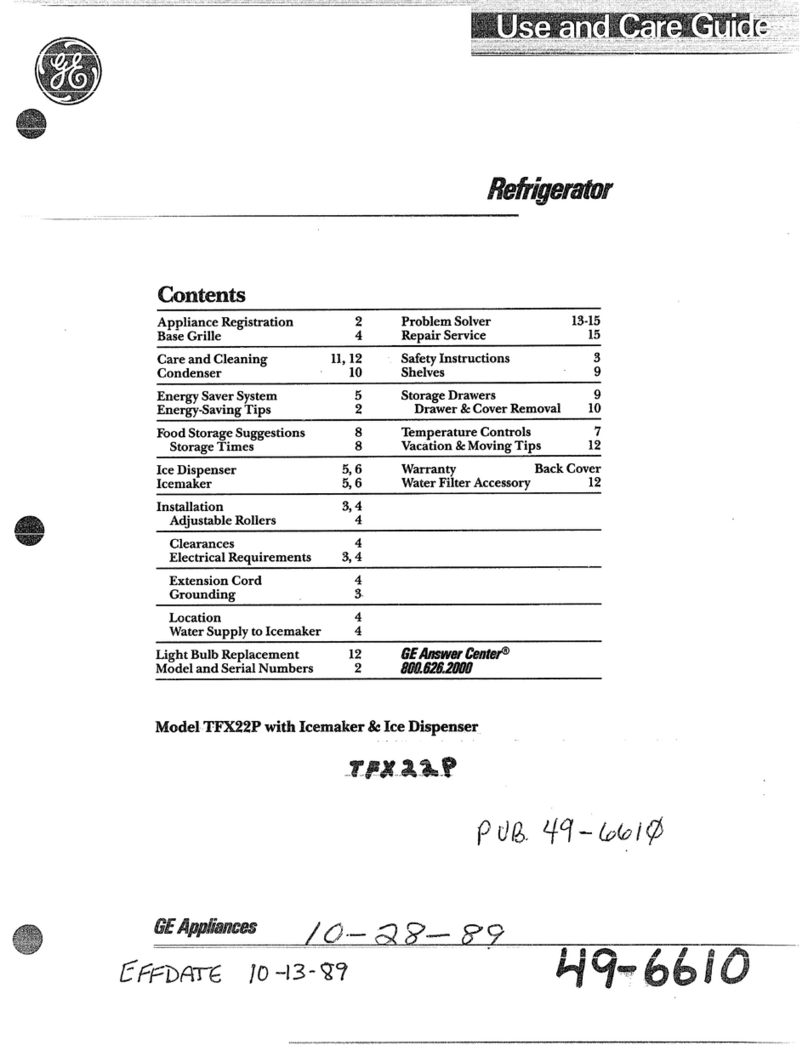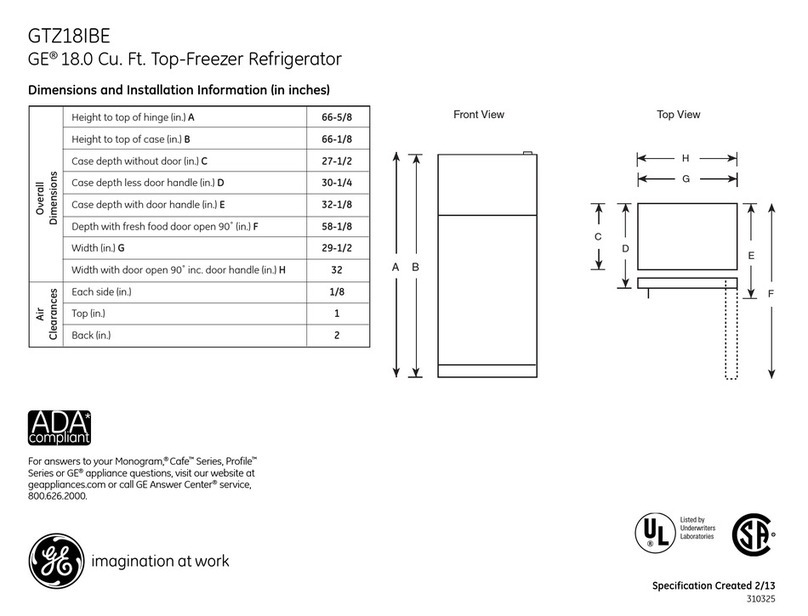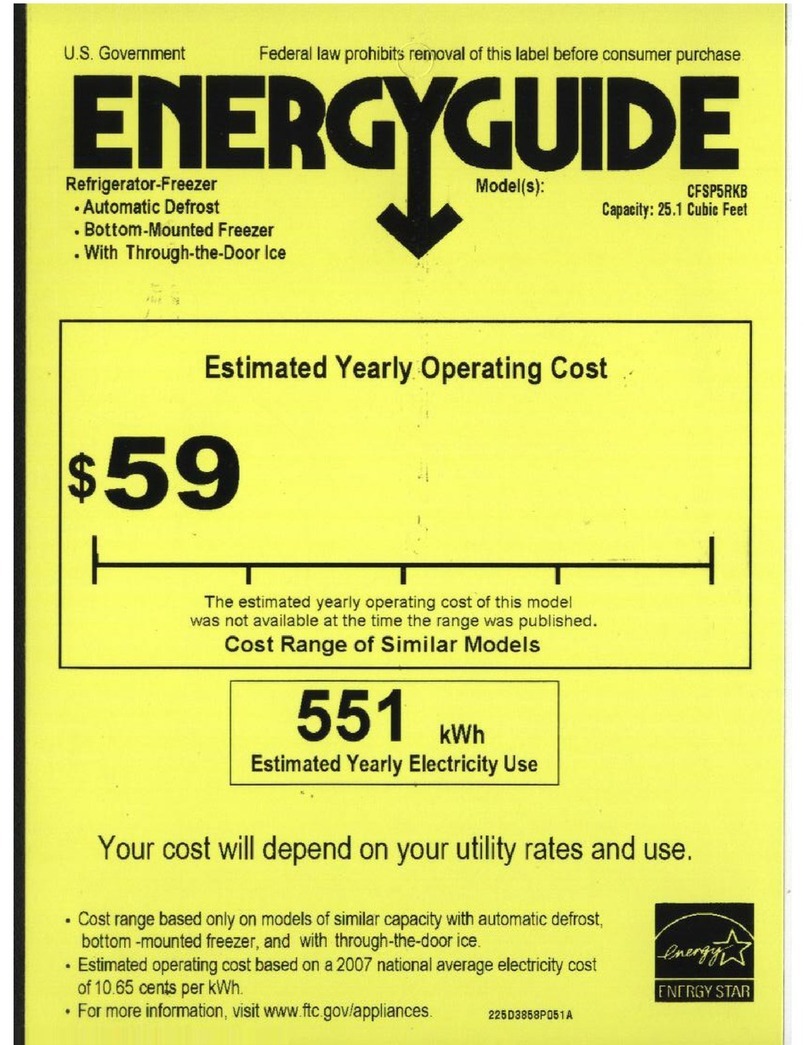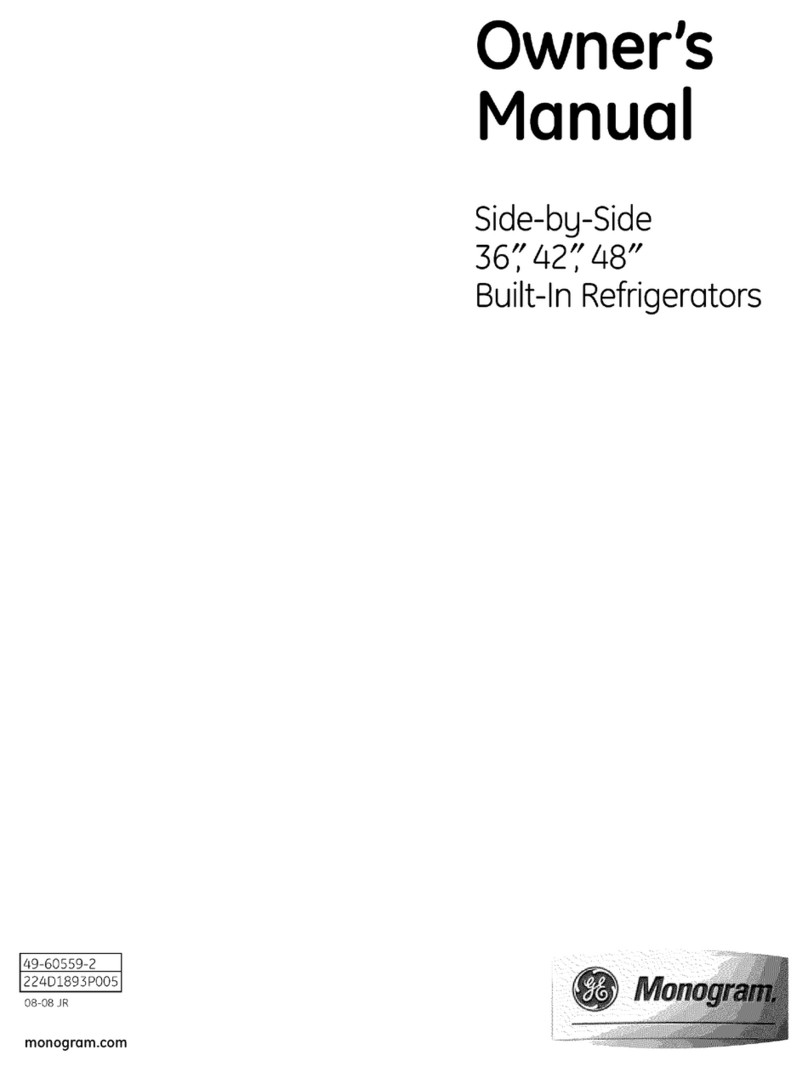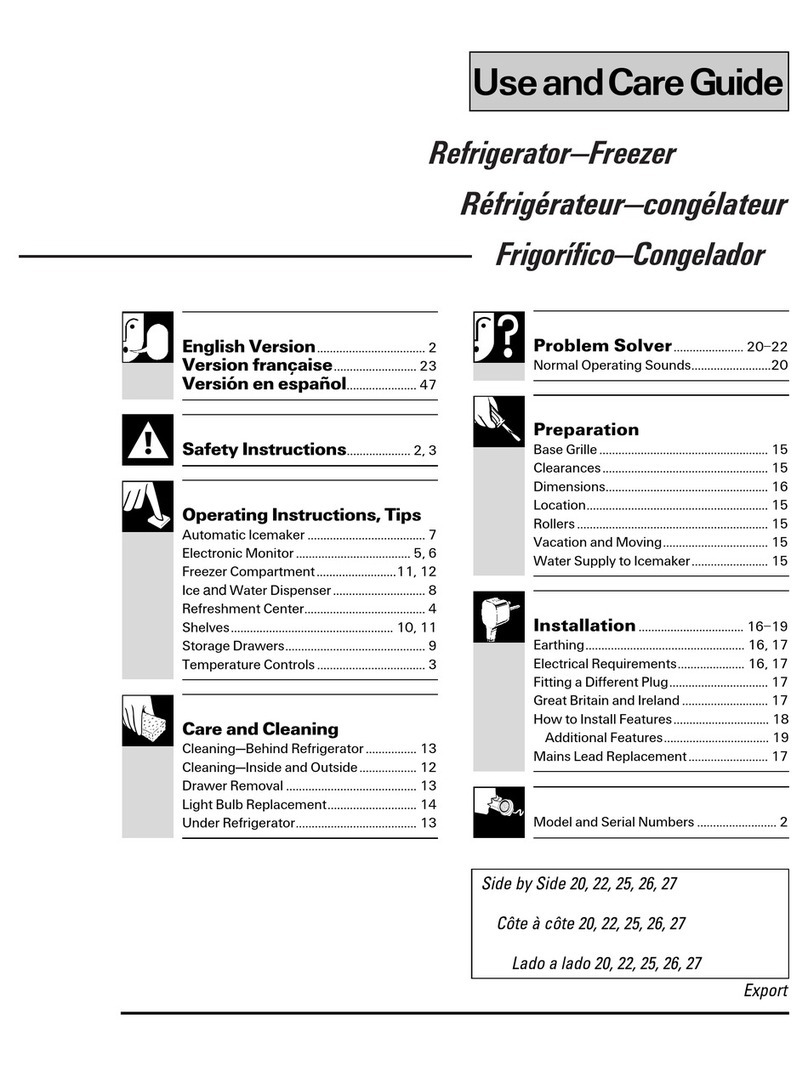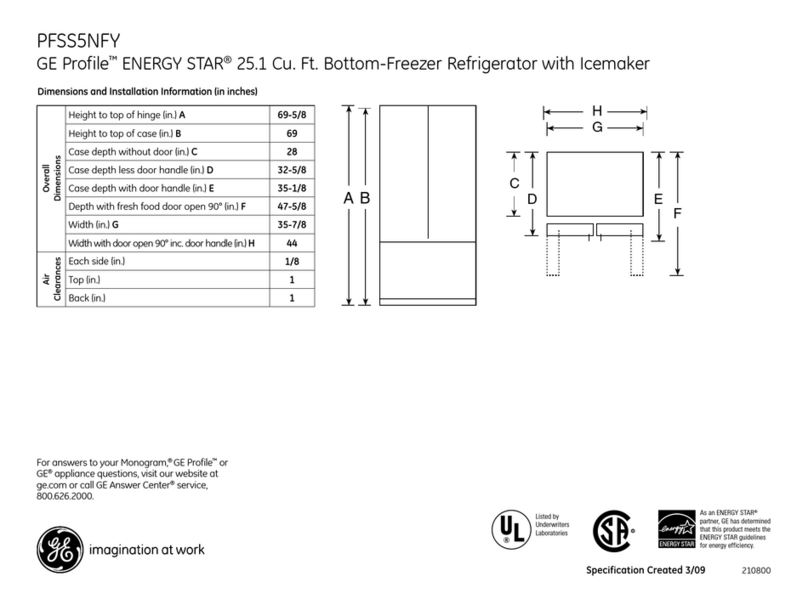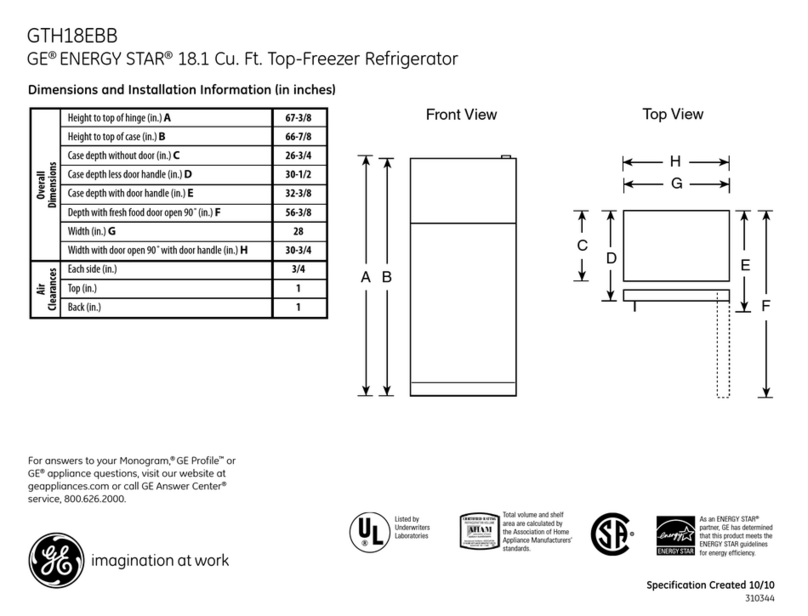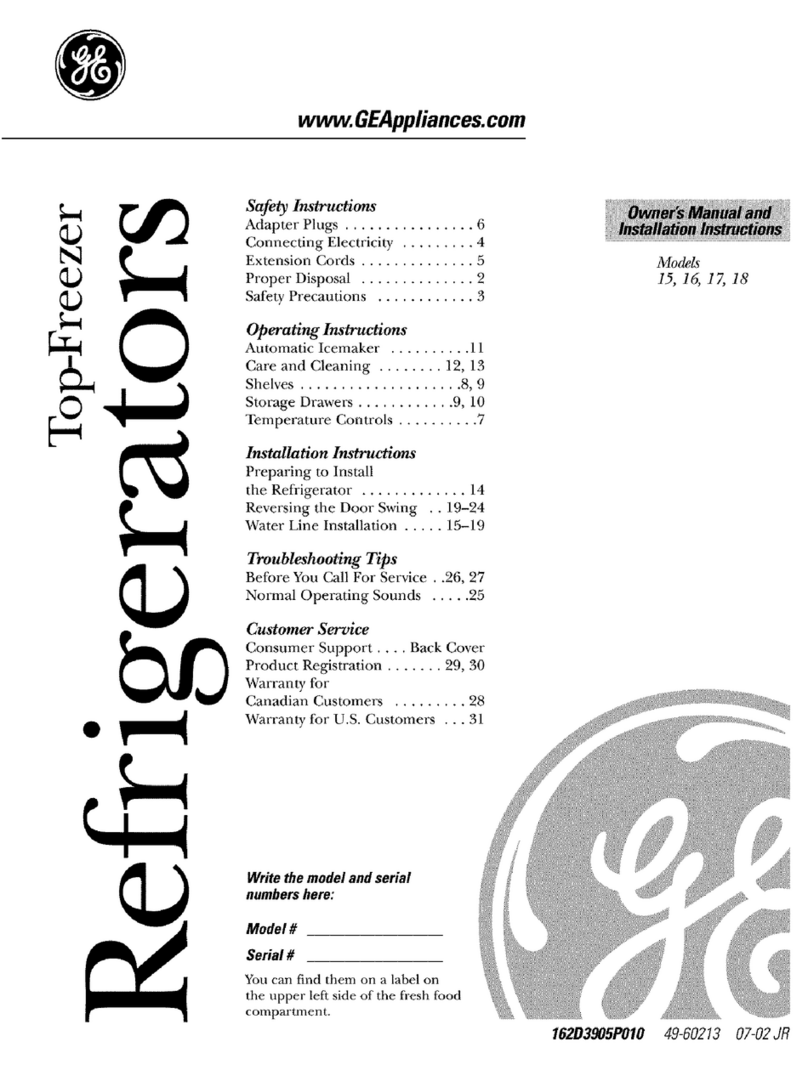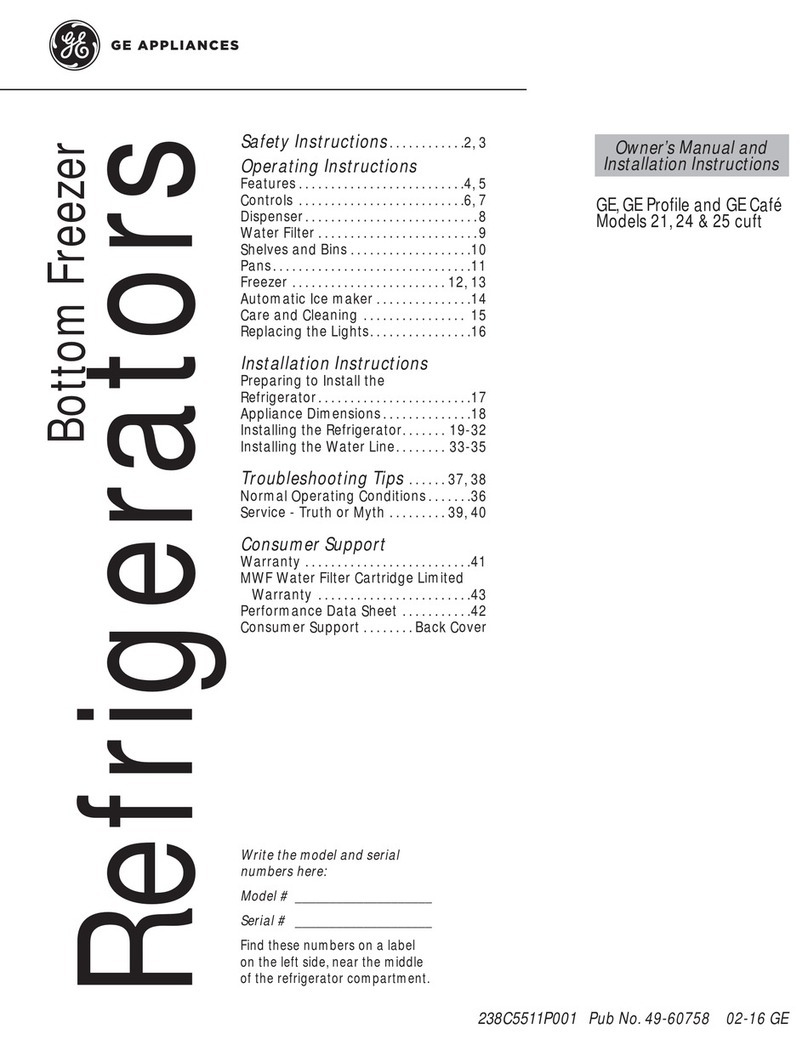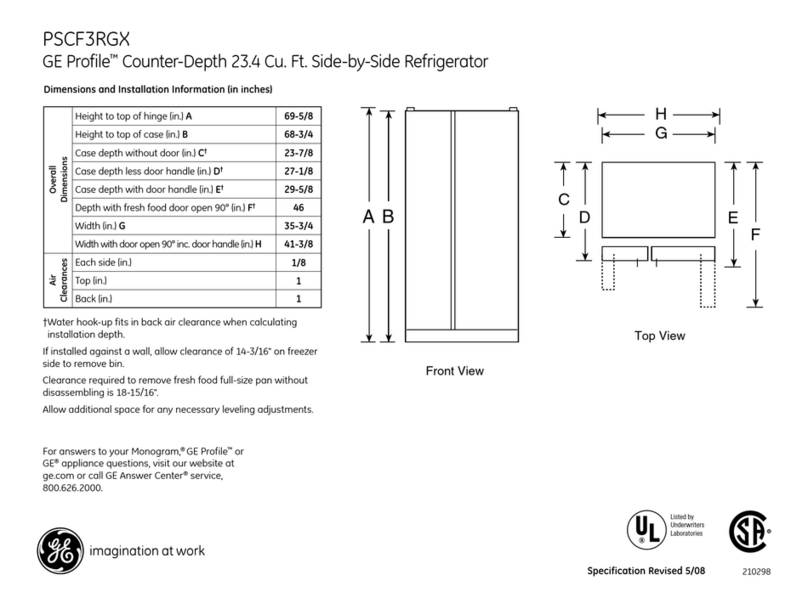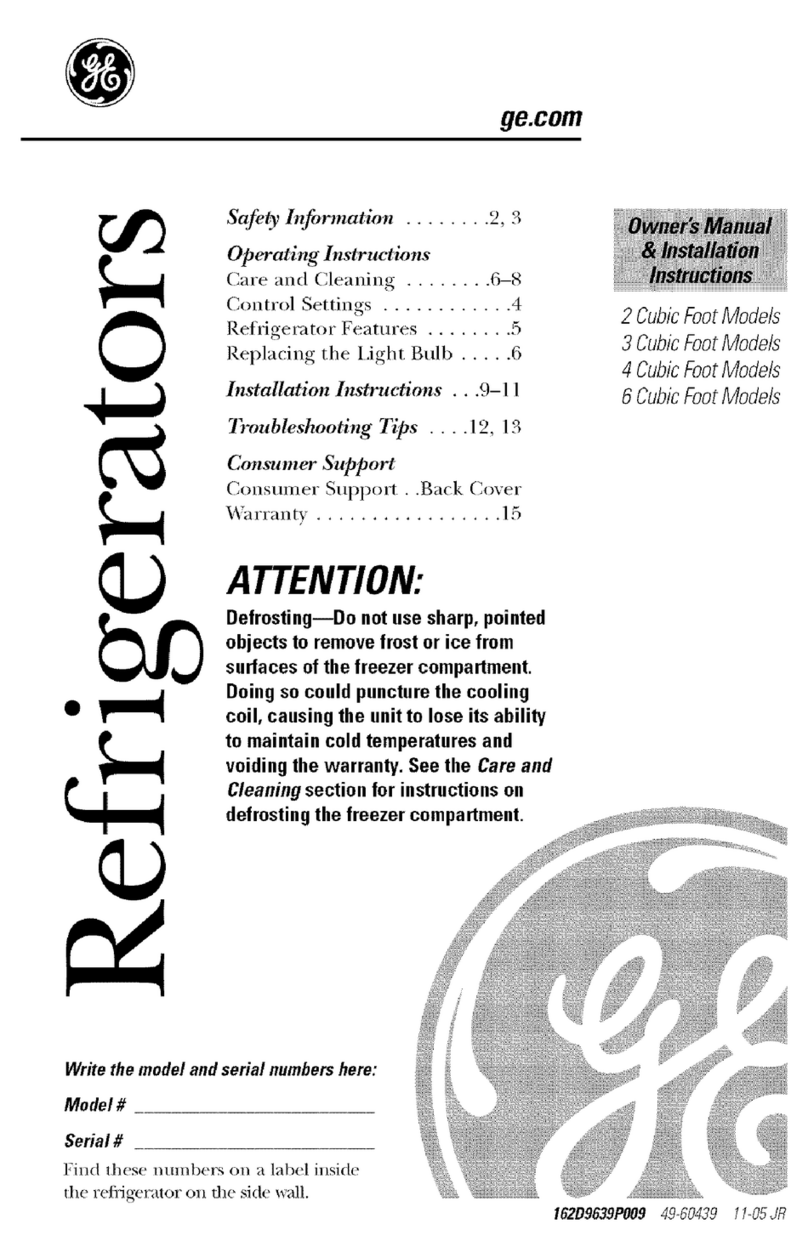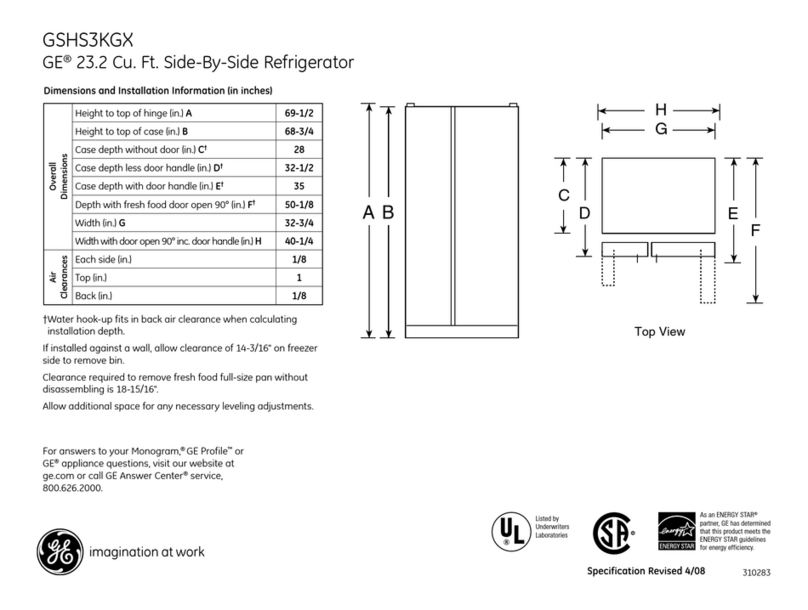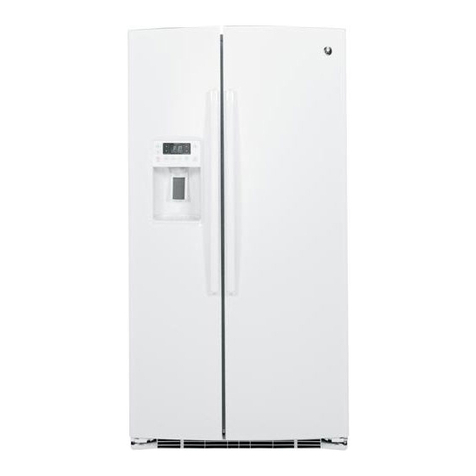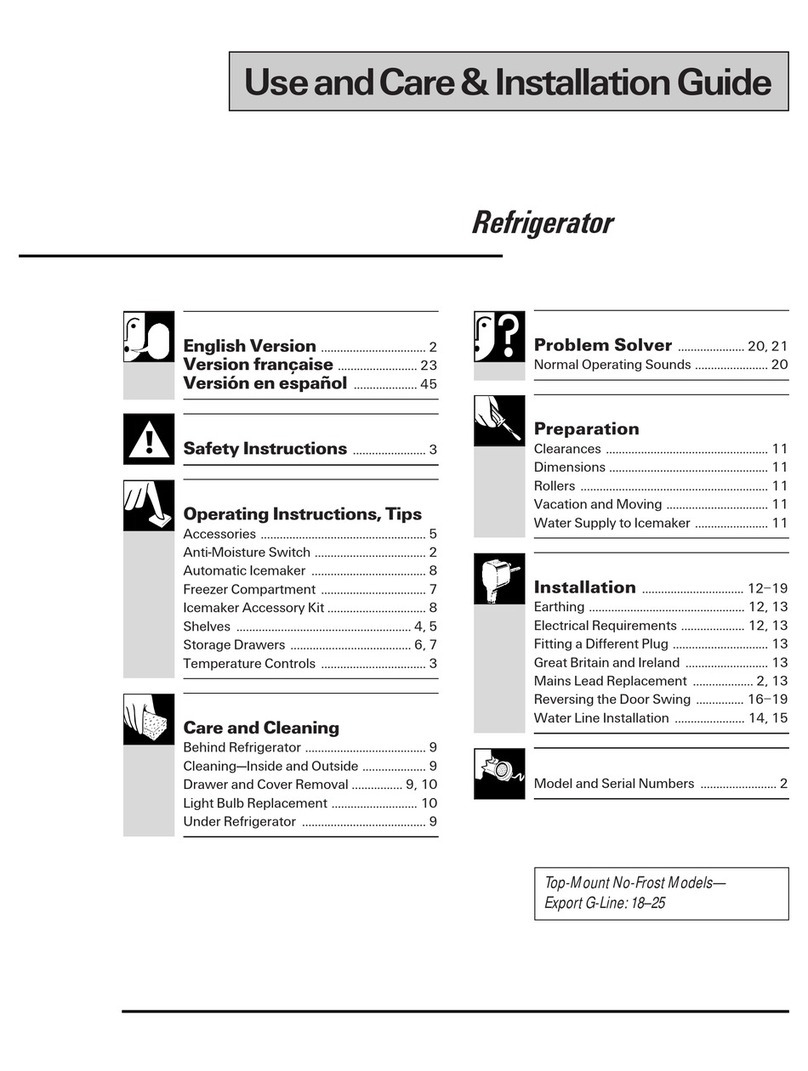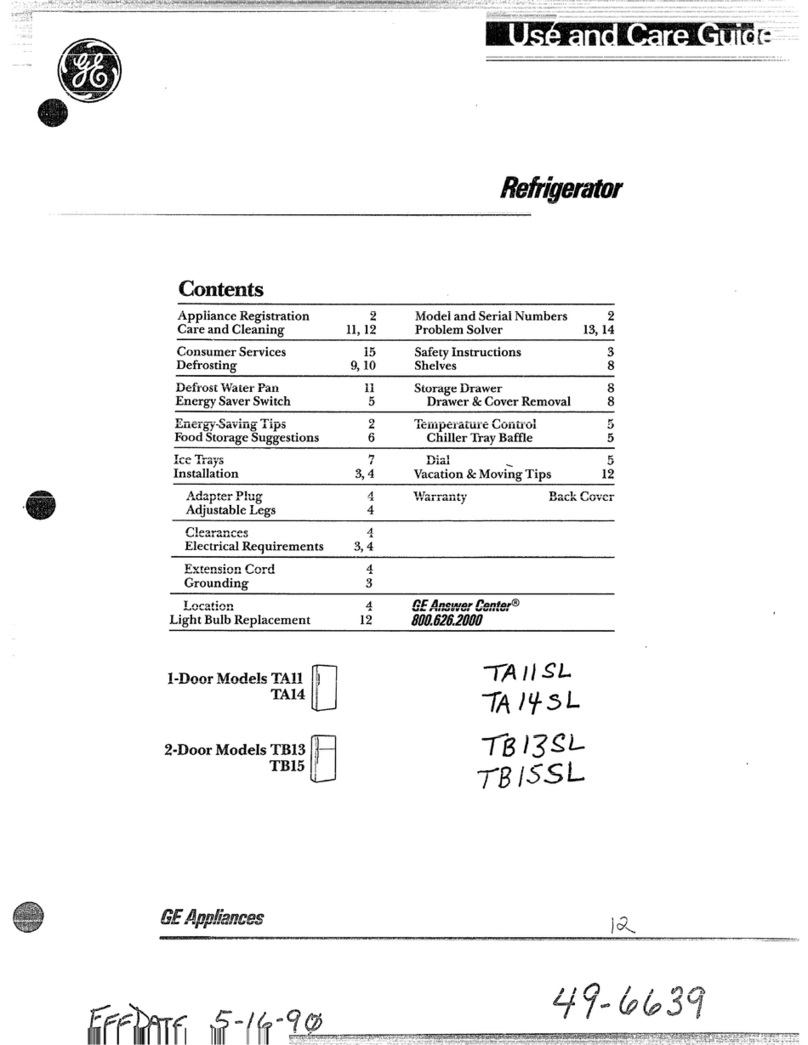
FOOD STORAGE SUGGESTIONS
8
Suggested storage times for meat and poultry*
Eating quality DAYS IN MONTHS IN
drops after REFRIGERATOR FREEZER
time shown AT 35° to 40°F. AT 0°F.
(2° to 4°C.) (-18°C.)
Eating quality DAYS IN MONTHS IN
drops after REFRIGERATOR FREEZER
time shown AT 35° to 40°F. AT 0°F.
(2° to 4°C.) (-18°C.)
Fresh Meats
Roasts (Beef & Lamb) ...................... 3 to 5 ...........................6 to 12
Roasts (Pork & Veal)........................ 3 to 5 ...........................4 to 8
Steaks (Beef) .................................... 3 to 5 ...........................6 to 12
Chops (Lamb)................................... 3 to 5 ...........................6 to 9
Chops (Pork) .................................... 3 to 5 ...........................3 to 4
Ground & Stew Meats ...................... 1 to 2 ...........................3 to 4
Variety Meats.................................... 1 to 2 ...........................3 to 4
Sausage (Pork)................................. 1 to 2 ...........................1 to 2
Processed Meats
Bacon ................................................... 7...................................1
Frankfurters.......................................... 7.................................1/2
Ham (Whole)........................................ 7 ...............................1 to 2
Ham (Half) ........................................ 3 to 5 ...........................1 to 2
Ham (Slices)......................................... 3 ...............................1 to 2
Luncheon Meats ............................... 3 to 5..........Freezing not recommended.
Sausage (Smoked)............................... 7..............Freezing not recommended.
Sausage (Dry & Semi-Dry)............. 14 to 21........Freezing not recommended.
Cooked Meats
Cooked Meats and Meat Dishes........ 3 to 4 ...........................2 to 3
Gravy & Meat Broth.......................... 1 to 2 ...........................2 to 3
Fresh Poultry
Chicken & Turkey (Whole)................ 1 to 2..............................12
Chicken (Pieces)............................... 1 to 2...............................9
Turkey (Pieces)................................. 1 to 2...............................6
Duck & Goose (Whole)..................... 1 to 2...............................6
Giblets............................................... 1 to 2 ...............................3
Cooked Poultry
Pieces (Covered with Broth).............. 1 to 2...............................6
Pieces (Not Covered)........................ 3 to 4 ...............................1
Cooked Poultry Dishes ..................... 3 to 4 ...........................4 to 6
Fried Chicken .................................... 3 to 4 ...............................4
(Other than for meats & poultry) FREEZER
Most fruits and vegetables................................................8-12 months
Lean fish.............................................................................6-8 months
Fatty fish, rolls and breads, soups, stew, casseroles .........2-3 months
Cakes, pies, sandwiches, leftovers (cooked),
ice cream (original carton) ............................................1 month max.
Meats, fish and poultry purchased from the store vary in quality and age;
consequently, safe storage time in your refrigerator will vary.
*U.S. Department of Agriculture
Fresh Food Storage Tips
To store vegetables:
•Use the vegetable drawers—they have
been designed to preserve the natural
moisture and freshness of produce.
•Covering vegetables with a moist towel
helps maintain crispness.
•As a further aid to freshness,
prepackaged vegetables can be
stored in their original wrapping.
Unfrozen meats, fish, and poultry:
•Always remove store wrappings.
•Rewrap in foil, plastic wrap or wax paper
and refrigerate immediately.
Cheese:
•Wrap well with wax paper or aluminum
foil, or put in a plastic bag.
•Carefully wrap to expel air and help
prevent mold.
•Store prepackaged cheese in its own
wrapping if you wish.
Tips on Freezing Foods
There are 3 essential requirements for efficient home freezing.
1. Initial quality. Freeze only top-quality foods. Freezing retains
quality and flavor; it cannot improve quality.
2. Speed. The quicker fruits and vegetables are frozen after picking,
the better the frozen product will be. You’ll save time, too, with less
culling and sorting to do.
3. Proper packaging. Use food wraps designed especially
for freezing.
To freeze meat, fish and poultry, wrap well in freezer-weight foil (or
other heavy-duty wrapping material), forming it carefully to the shape
of the contents. This expels air. Fold and crimp ends of the package to
provide a good, lasting seal. Don’t refreeze meat that has been
completely thawed; meat, whether raw or cooked, can be frozen
successfully only once.
Fine-quality ice cream, with high cream content, will normally
require slightly lower temperatures than more “airy” already-packaged
brands with low cream content.
•It will be necessary to experiment to determine the freezer
compartment location and temperature control setting to keep your
ice cream at the right serving temperature.
•The rear of the freezer compartment is slightly colder than the front.
New techniques are constantly being developed. Consult the County
Extension Service or your local Utility Company for the latest
information on freezing and storing foods.

